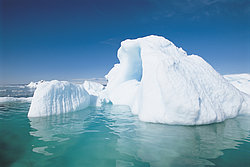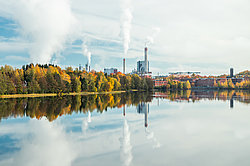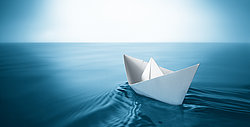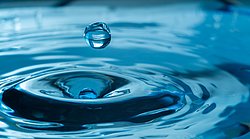Water: A precious commodity
Today, clean drinking water is unavailable to over one million people. More than 2.6 billion are excluded from basic sanitary installations – which is 40 percent of the world's population. And even in places where wastewater is collected and removed from the immediate living environment of people there is no guarantee that it will be suitably treated. Against this background, access to clean drinking water is one of the Millennium Development Goals of the United Nations.
In terms of drinking water, Germany is in a very comfortable position. Water shortages are unknown and every citizen has access to clean potable water. Nevertheless – this resource must be handled with care. The paper industry is fully aware of this requirement, since it needs water for quite a number of processes, such as for disperging purposes and chiefly as a transport medium for fibrous material. Besides, papermills in Germany use water for cleaning machine clothings or for cylinder cooling, consuming roughly 250 million m³/year of freshwater. To satisfy this demand, 72% freshwater originates from surface waters, 27% from wells or fountains and just 1% is drawn from local drinking water supplies.
In Germany, both withdrawal and recirculation of water are subject to stringent regulations and give rise to costs. Apart from having to meet the requirement of inhouse water treatment, paper companies in most of the German Länder are liable to pay fees for the withdrawal of water.
The applicable regulation in this context is the EU Water Framework Directive which also specifies standards for state-of-the-art wastewater treatment. Accordingly, the German paper industry sees utilization of water not only as an ecological but also as an economical matter. It therefore finds itself committed to optimizing its processes while increasingly closing its water circuits. The specific effluent volumes per kilogram paper, which are normally taken as a measure for the paper industry's water consumption, amounted to nearly 50 liters in the 1970's. Today this figure is down to 8.6 liters/kg paper. The statistics is regularly published by the German Pulp and Paper Association together with the PTS -Fibre based solutions (https://www.ptspaper.com/fibre-based-solutions)
Some 30% of papermill effluents are pre-treated before they are discharged into municipal sewage plants. The remaining 70% are subjected to mechanical and biological treatment in advanced inhouse treatment plants. As much as 4% of overall paper production originates from mills running fully closed whitewater systems. Complete closure is, however, only feasible with low-salt and low-hardness water qualities, producing papers for dedicated applications.



